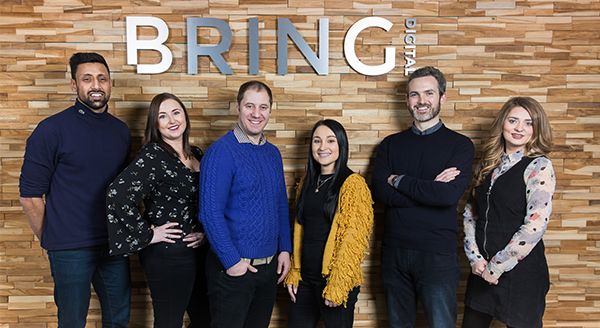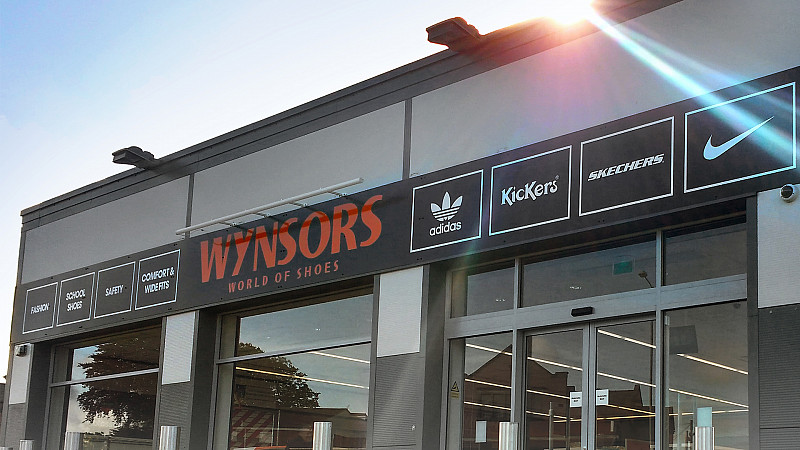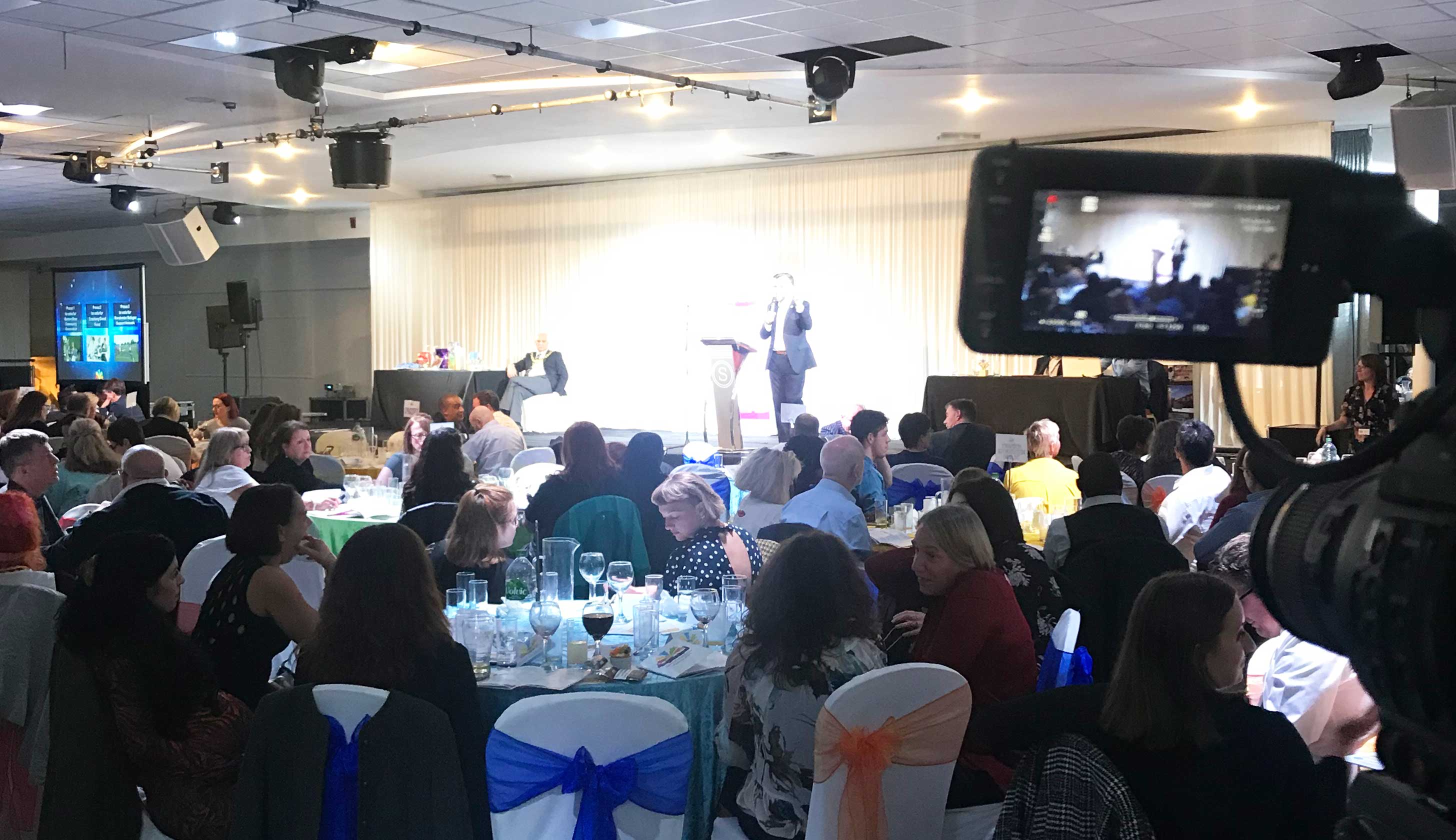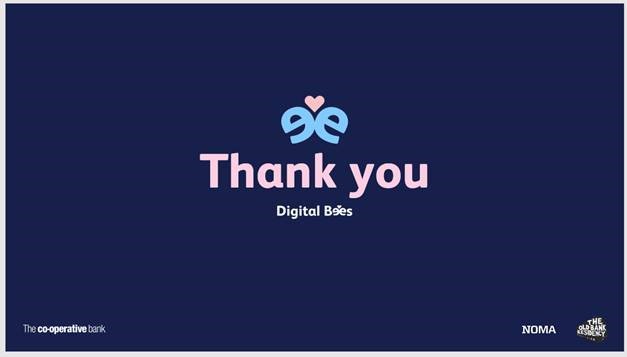
The internet seems a place of unlimited accessibility. Everything, after all, is available in a click, be it a product, service or interaction. A life offline has become difficult to imagine, especially for the generations that have never lived one.
However, it’s easy to forget that for some people, the internet isn’t a tool that makes life easier, but in fact much harder.
For those with more complex accessibility needs, navigating the social media landscape can be lonely and disorienting. Many platforms and systems are designed under the assumption that everyone experiences the world similarly. This simply isn’t the case.
When it comes to digital marketing, your paid and organic content could be difficult or even impossible for certain members of your target audience to access and engage with. You could be isolating potential consumers without even knowing it.
Don’t make assumptions about your audience’s accessibility needs. Read on to discover some simple tips and tricks to make your brand’s content as accessible as possible.
The User Experience
The term ‘user experience’ has become very generalised, not always considering the variation of needs, desires, and perceptions from human to human. Consider the experiences of people who are:
- Blind or visually impaired.
- Deaf or hard of hearing.
- Dyslexic.
- Autistic or otherwise neurodivergent.
- Photo-sensitive epileptic.
- Limited in mobility.
What challenges might they face when trying to use social media? How might their needs, preferences, learning process and sensory perceptions vary from others?
It’s important to remember that the online accessibility issue doesn’t only impact those with recognised disabilities. It can apply to any limitation a person might face during the user experience journey, from knowledge gaps to unfamiliarity with a new interface.
So, What Happens When Social Media Lacks Accessibility?
This is best illustrated with a couple of examples…
Twitter’s Redesign Mishap
A recent redesign of Twitter’s user interface to feature high contrast colours, a new font and a ‘denser’ visual experience led to an influx of complaints. Headaches, eye strain and other discomforts were felt widely by users of varying abilities. This demonstrates that accessibility isn’t just a “disabled issue”, as many lazily assume.
Thankfully, Twitter responded fairly quickly, making changes to the layout to reduce issues. Being a platform for communication certainly has its perks when it comes to handling PR and consumer feedback.
All changes to social media platforms generate backlash (Instagram algorithm we’re looking at you). However, this example goes to show just how important it is to understand the needs and comfort of your audience before making changes to your content.
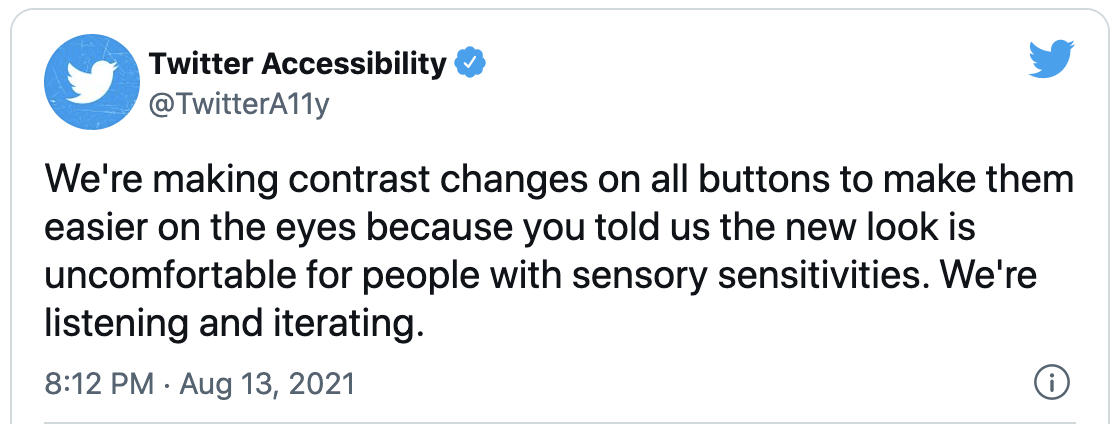
Instagram’s Everyday Issues
As it’s such a visual platform, many assume that blind people would have no interest in Instagram at all, but that isn’t the case. How would you feel if, try as you might, you didn’t have access to that trending post that everyone in the office is talking about?
Commonplace equipment like screen-readers fail to demystify Instagram for the visually impaired. The devices reel off all the information on a page in order, robotically, giving equal emphasis to everything. This can leave the user overloaded with repetitive, fairly useless and disorientating auditory information, especially when machine learning gets it wrong.
Screen readers often resort to ridiculous attempts at guessing what a photo shows in the absence of alt-text attributions. This can produce hilarious but confusing results, such as mistaking a bridal shop ad for “an image of two brown cats lying on a textured surface”. Without a sighted person beside them to identify these mistakes, blind individuals struggle to understand what they’re interacting with.
Similar access issues arise for the deaf. It’s easy to be left out of the joke of a viral reel if the creator has neglected to add captions or subtitles. This highlights the content creator’s responsibility, brand or individual, to make their content as accessible as possible.
What Can You Do About Accessibility?
Although some platforms are taking slow steps to improve accessibility (see TikTok), unfortunately, it’s often down to users to fill the gaps. Even when new features are introduced, they are rarely well publicised or integrated, so must be actively sought out.
While as a single brand or individual, you aren’t able to directly influence the construction of social media platforms (aside from piling the pressure on by being vocal online), you can still do your bit for accessibility.
Here are a few common problems that arise and how you can address them in your brand’s content…
Emojis
Each emoji has a very specific audio description, so do your research when choosing one. For example, do you know the visual difference between ‘worried face’, ‘disappointed face’ and ‘unamused face’? They all sound similar, but they vary in what they add to a post’s context when read aloud. This lack of clarity could give the wrong impression to a partially sighted person using a screen reading device.
If you use emojis heavily, you could be misconstruing your brand’s voice, undermining your digital marketing efforts. Use this online tool to select the most appropriate emoji for your copy.
Colour Combinations
Certain colour combinations can be visually overstimulating, creating an overwhelming and uncomfortable experience for some with sensory sensitivities, such as autism or ADHD. Some combinations are not clear enough for the visually impaired or dyslexic individuals to interpret.
As a general rule, stick to light text on a darker background. This tool rates the contrast and clarity of your combos if you’re stuck.
Alt-text Descriptions
These fix the problem of screen readers’ poor interpretation and add a human touch. Well-thought-through alt-text descriptions allow the blind to virtually ‘view’ photos through audio.
Think about the details that matter when writing alt text descriptions. Be descriptive and informative, but not poetic or over-elaborate. Think about why the image is important to the overall story of the content. Consider facial expressions, body language, action, clothing and other potentially important information.
Overall, keep your descriptions simple, descriptive, functional and enriching.
Video Captions
While auto-generation does exist, you’ve probably already picked up on the pattern of inaccuracy enough to realise the extent to which it works.
Nowadays, most platforms, namely TikTok and Youtube, offer captions either integrated within video content or alongside it, giving deaf people access to audio content.
Make sure yours are positioned somewhere visible, not covered by any other elements on the screen, and above all, accurate.
Fancy Fonts
??’? trendy?? ??????? ????? ?❀??? ⁱⁿ ᵇʳᵃⁿᵈᵉᵈ ⓒⓞⓝⓣⓔⓝⓣ.
However, these are difficult enough for those of us with the strongest eyesight and reading ability to interpret. They pose great difficulties to people with dyslexia or visual impairments. When it comes to assistive devices like screen readers, they’re uninterpretable. Consider leaving them out to ensure maximum clarity.
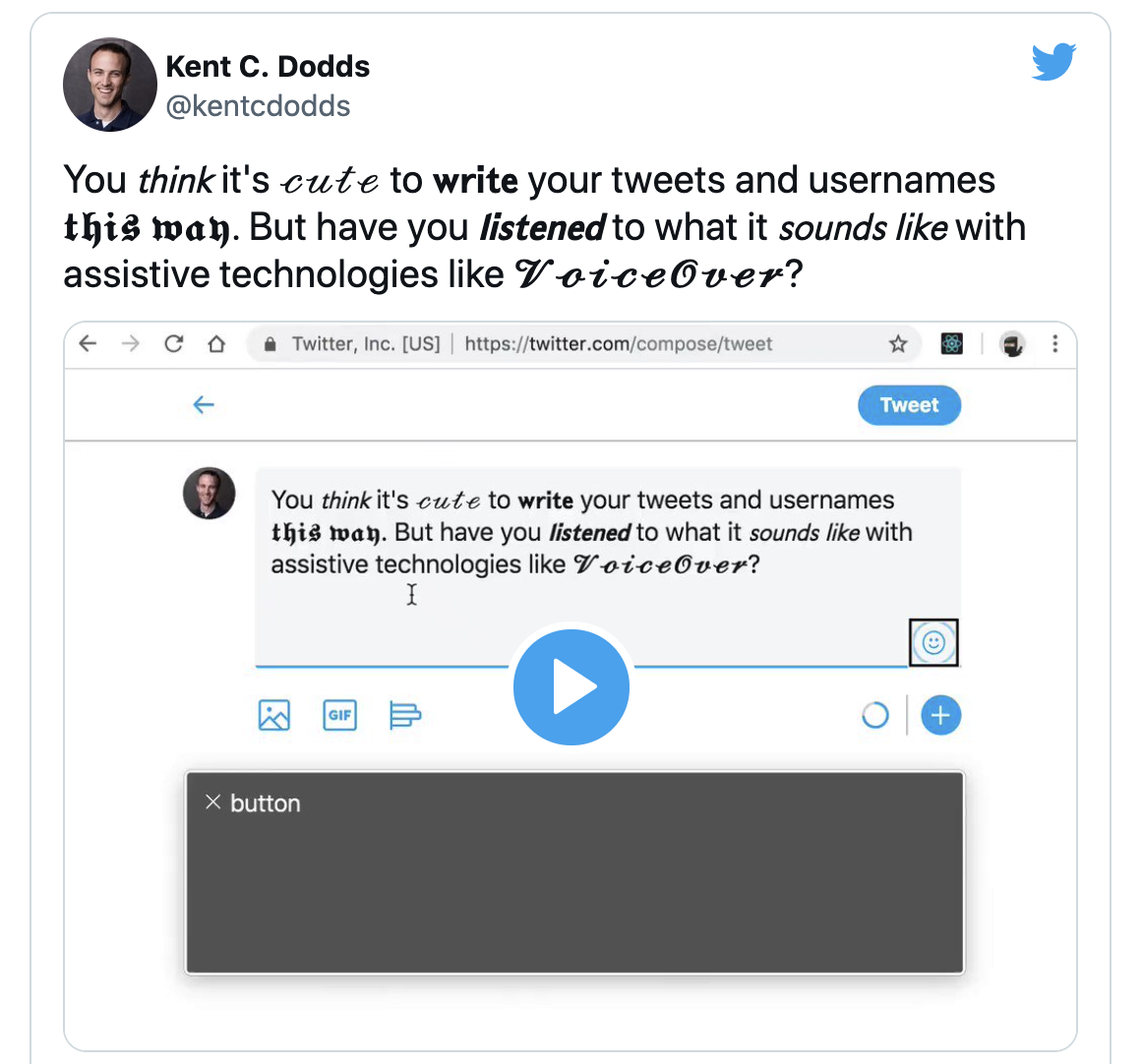
Warnings
Online content can be scary to navigate when you have photo-sensitive epilepsy. It can be hard to predict when a video will trigger a seizure. One way to help this is the inclusion of content warnings for flashing images.
These are already integrated on TikTok, and hopefully, other social media sites will follow suit.
Changing Your Mindset
The American Foundation for the Blind stress that accessibility shouldn’t be “an add-on to an already-existing platform well after the fact,” but designed into platforms in their conception. If we change our attitudes as users and consumers of social media, making our intentions heard by using existing features to prioritise accessibility, platform creators will start to listen.
Accessibility isn’t just about consumers knowing what tools are available to help them. It’s about content producers knowing what tools are available to make their content accessible to all.
These are a few relatively easy fixes that any brand or social media manager is equipped to put in place. Once you’re aware, you can already make small steps in the right direction.
I think we can all agree, a lot of work needs to be done by brands, social media platforms, and individuals to combat the huge accessibility gap that exists in online content. What can you do to improve the accessibility of your brand’s social media presence?
Need help with your brand’s paid or organic social content? Check out DMT’s services in Social Media Management and Paid Social Advertising.


